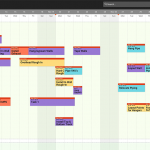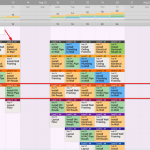(By Hal Macomber with Adam Hoots, Lean Enthusiast Construction ACHE Solutions) In the last four posts, we explored the principles or laws that universally govern production systems. Neither the construction industry nor associated academia introduce, let alone teach, production system design and management. Consequently, we rely on the experience and good judgment of successful senior people to guide the way. Typically these are the hard lessons that the most successful builders have “learned by experience.” These production laws are the keys to establishing flow on a project.
So, how did we learn about project production management? It started with a fellowship for a young academic visiting Stanford in 1992. Lauri Koskela, now Professor of Construction and Project Management, noticed what was happening in Freemont, CA at NUMMI, a partnership between Toyota and GM. He wrote the first paper that proposed the “new production principles” apply to design and construction. A year later, academics from several universities convened for the first annual International Group for Lean Construction. This year will mark the 29th conference.
Flow is the goal of all production systems.
We also learned from the Lean Construction Institute, many books on Toyota and other Lean companies. But, unfortunately, we also mislearned and misunderstood. That includes Hal and many of his contemporaries. Let’s take the five Lean thinking principles as an example. Jim Womack and Dan Jones proposed that we could be Lean if we adopted these principles:
- Define value from the customer’s perspective and in their language
- Organize the value-adding work as a value stream
- Make the workflow
- Pull work through the value stream
- Pursue perfection
What Jim and Dan underplayed and many of us failed to understand is that all five principles must be operating. Yes, we intend to design production systems to deliver what we promise our customers. And then it breaks down. Whether we describe the physical work of construction or the intangible work of architecture and engineering, we spend far too little time exploring the value stream for the senior promises we make to the customer (client). Flow turns out to be the goal of the production system, not just one of the principles. That is a big misunderstanding. Flow when you can; pull when you can’t. Yet, our practice of customarily pushing work into the system makes flow unlikely. Stop pushing! And perfection? We won’t get the production system design right, but we can be better every day ONLY IF we embrace learning and experimentation as our practice.
Don’t mess with production laws. You will not win.
Womack and Jones failed to show that the whole system must change. Tinkering around at the edges has little to no impact. Sampling from the Lean buffet of tools, methods, and practices might make you feel good, but results are insignificant. We will only achieve the benefits of production system design when we start with the purpose of the system. Flow is the goal of all production systems. But, it is only possible when the production system conforms to the four basic production laws. And, that is not enough. We must replace many of our current practices with new practices to operate in accord with those laws.
In the second blog post, you saw that no improvement anywhere in the system improves throughput unless we expand the bottleneck.
You understand via the third post that variation in operations performance compounds (exponentially) with dependency.
The fourth blog post illustrated how operating a production system to high utilization levels significantly delays project completion.
In the fifth post, you witnessed that projects are surprisingly shorter when we embrace small-batch construction.
These are the laws of production. Yet, what do we do on an everyday basis? We often act by following critical path thinking. In other words, we ignore, do not understand, or are oblivious to production laws.
Stop pushing doesn’t mean to stop encouraging people to go further. Instead, in production management, pushing means starting work on a flow unit without regard for the availability of resources to continue to work on that flow unit. Doing work when it isn’t required is also considered pushing. Taking people away from work in process interrupts flow and increases variation. Working ahead unnecessarily takes on more risk. Either case of pushing is terrible for the project.
Fun fact. Hal was fired as a consultant on a nuclear power plant upgrade project because he advised the team to throttle back starting work (contrary to the master schedule) while achieving increasing throughput in the system. Why? We weren’t meeting the planned start dates in the master schedule. We couldn’t do it. The work was not ready to do it. The capacity wasn’t available to do it. Yet, the commonsense among the scheduling community governed managing the project. The result? The project fell further behind when they went back to launching work according to planned start dates.
Don’t mess with production laws. You will not win.
We will show how you can design your production system to conform to the four production laws and dramatically get more accomplished in shorter periods and with less risk in future blog posts.
The blog post title comes from conversations with Jason Schroeder, author of Elevate Construction Takt Planning.
If you missed last week’s post please read Bigger Batches Create Longer Projects. For more information on the Laws of Production, please check out Lean Training: If You Can Increase Project Profitability by 20%, You Can Increase It by 50%.










